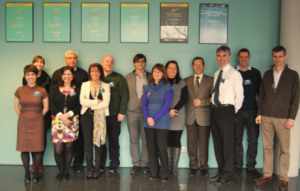SMEs, Nestlé and Valor in ultrasound chocolate tempering project
 A group of small-to-medium-sized enterprises along with multinationals Nestlé and Valor have embarked on a project to improve chocolate tempering using ultrasound.
A group of small-to-medium-sized enterprises along with multinationals Nestlé and Valor have embarked on a project to improve chocolate tempering using ultrasound.
The Ultrachoc project, funded by the EU under the Seventh Framework Programme, aims to give chocolate manufacturers more consistent quality in products by controlling and monitoring cocoa butter crystallization with ultrasound.
Tempering is a process in chocolate manufacturing that involves mixing and cooling liquid chocolate under controlled conditions to ensure cocoa butter crystallizes in Form V, the most desirable of six possible crystal types. Incorrect tempering results in chocolate with a soft texture that is dull in color and difficult to de-mold.
Real-time crystallization monitoring
Ultrachoc hopes to use ultrasound to manage the crystallization process and incorporate real-time analysis.
Adriana Delgado, project manager of Ultrachoc who works in novel technologies for IRIS, told ConfectioneryNews.com: “The idea is to control the tempering process online”.
She said that under current technology chocolate makers analyzed crystallization offline by regularly taking chocolate samples to labs to determine the level of solid fat content (SFC) in the tempering machine at the temperature where mostly type V crystals can survive. IRIS said that traditional methods of SFC determination were slow, irreproducible and required additional chemicals.
Delgado said that with ultrasound, manufacturers could avoid these delays using real-time monitoring of the tempering process that would allow companies to adapt the process to obtain the correct tempering. “You are always getting what you want,” she said.
How it works
Ultrachoc will use an ultrasound Doppler-based velocity profile and pressure drop technique (UVPPD) to incorporate an online temper meter.
Lab trials will experiment with ultrasound UVPPD and ultrasound attenuation (USA) techniques, UVPPD+USA, to define parameters needed for an industrial system for chocolate manufacturers.
Ultrasound at high frequencies can be used for analysis, while low frequencies can be used to modify food products. The project will explore using low frequencies to control crystal sizes in chocolate and high frequencies to develop an online sensor.
The project aims to achieve 1-2% solid fat content in the tempering machine at a temperature where mostly Form V crystals can survive.


































